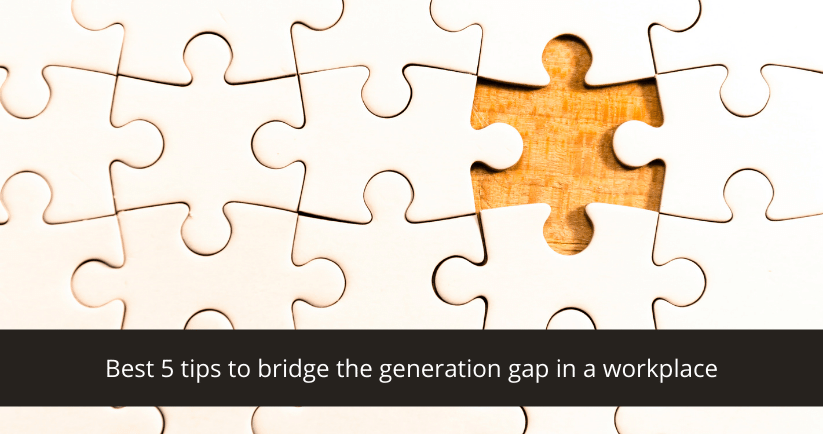Age gap exists in every company and workplace. With more and more student graduating and seeking different employment opportunities, one of the most unasked and unattended question lies in managing age gap in the workplace. Now why is it important to do so? So that the older workforce does not feel threatened of being replaced by their younger counterpart and the younger workforce can learn essential skills without the fear of being bullied or taken for granted by their older counterparts. Managing the age gap also ensures collaboration and bringing out the best of each generation. Here are best 5 tips to bridge the generation gap in a workplace:
1. Understanding them: Baby boomers includes anyone born between 1946 and 1964. While Gen X includes people born between 1965 to 1977 and Gen Y resembles period of 1978 to 1999. With all of them having their own specialties like being competitive by nature, self-reliant attitude and being optimistic respectively. A blend of all of them can prove to be a genie if managed properly.
2. Watching out for similarities: This is the most basic of all. According to many studies, looking at similar core values can create open-mindedness among seniors and other departments. This later motivates to transparency and efficient communication between workforce thus delivering great outcomes. Aligned core values of your employees belonging to different age can work great for your organization irrespective of their age gaps.
3. Open communication: Letting your employees communicate without any barrier with open-minds welcoming new ideas can be a good lever for bring all of them together. Bridging the age gap is not the only benefit of open communication. Employee engagement, unique business ideas, lowered wrong decisions are some plus points. Open communication is the key factor for resolving all kind of pains in an organization. The HR can hold workshops and guide the senior members as to what to expect from the younger crowd and how to communicate with them effectively.
4. Mentoring: It mainly involves training or advising to the juniors or less experienced employees. In simple terms, it is sharing experiences and skills with the new generation in which the senior staff have mastered in. One senior staff can be assigned a new joinee to train and the HR can monitor the development of them both and help them adjust accordingly. This can be eased by any online available software like a training software. It keeps track, manages deadlines and helps evaluate the desired results.
5. Including new blood into management: Imagine an organization with management team comprising of all baby boomers! What about the response from workforce which has about 40% of the millennials? It will be difficult. The policies will tend to be more rigid and definitely not suited for the younger workforce. Try giving the millennials more responsibility and also including them at the top. Now you will see a drastic change in the decisions and management style. Perhaps, it’s time to transform the upper layer and bring in more flexibility.
What’s in Conclusion?
While managing age gap is not a onetime process, it involves open mindedness and efforts from everyone, it sure is achievable through workshops, one to one discussion forums and training software. To learn more about how our training management system can help you connect with your employees, or write to us at sales@pockethrms.com for more details.








